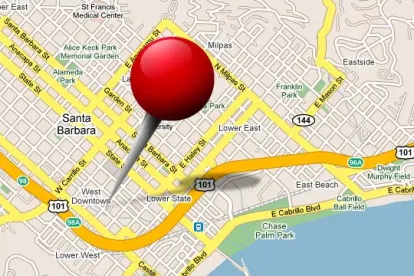In order for subject-matter to be eligible for patent protection, the claimed invention must be directed to one of the four statutory categories under 35 U.S.C. 101: process, machine, manufacture, or composition of matter. When a patent claims an abstract concept, the claim is often struck down by courts as failing to meet this patent-eligibility test. However, in ART+COM Innovationpool GmbH v. Google Inc., the Delaware District Court reached a different result when it denied Google’s motion that the claimed invention related to accessing geospatial data was not patent-eligible. Although the Court decided that an abstract concept was present, it nonetheless found that an inventive concept was claimed. The Court’s opinion is noteworthy, as it raises questions about treatment of prior art under the Alice test for patent-eligibility and the differences between an inventive concept and patentability over prior art under 35 U.S.C. §§ 102, 103.
The Supreme Court’s Alice test is a two-step process used in determining whether a patent claim complies with Section 101. Step 1 asks whether the invention claims matter that is “abstract.” If the answer is no, then the invention falls within the recognized classes of patentable subject matter, and there is no need to go further. However, if the invention claimed is “abstract” then the analysis must proceed to Step 2, which asks a more difficult question: whether the invention is solving a technical problem in a specific technical field and relying on more than the routine or conventional methods known to that field.
In ART+COM, the claim of the disputed ACI patent recited a process for accessing geospatial data to generate, for example, a navigational map. By recursively adjusting the map resolution and retrieving additional geospatial data, the process gives the user an impression of continuous movement across the map as the user changes perspectives (i.e. similar to an online map tool that generates a blurry image when shifting views or zooming in and out, but then replaces sections of the blurry image with high-resolution images).
Step 1 of Alice
The process claimed in the ACI patent involves the following steps:
-
Select a field of view to observe in the map,
-
Request and store map data for the selected field of view,
-
Display the map for the user’s selected field of view as one or more map sections, and
-
Divide the map sections into smaller sections repeatedly until a desired map resolution is achieved or no more map data is available.
Although it can be difficult to determine whether a patent claims abstract matter, the ART+COM Court seemed to have no trouble with it. Google argued that the claim was directed to an abstract concept, and likened it to “the age-old practice of a visitor in a library reviewing atlases that include maps with differing resolutions or scale.” The Court agreed, stating that the claim relates to the well-known human behavior of storing data in varying degrees of specificity, in which the data is made available upon request.
Step 2 of Alice
The Court next turned to the Federal Circuit’s opinion in DDR Holdings, LLC for guidance when it applied the second part of the Alice test. There, the appellate court found it significant that the patent claim, which recited patent-eligible subject matter, was “necessarily rooted in computer technology.” Yet the court also noted that a claim directed to a computer-centric problem “does not resolve the question of patent eligibility.” Reconciling these statements, the ART+COM Court concluded that the Federal Circuit’s “’rooted in computer technology’ heuristic” is best understood as a clue that when a solution overcomes a problem specifically arising in a particular technological realm, that solution may likely contain an inventive concept.
The ACI patent claim recites steps that involve storing and transmitting data, which are routine and conventional steps done by computers that, by themselves, clearly do not rise to the requisite level of an inventive concept under Step 2 of Alice. However, the Court found that the invention went beyond this and also sought to represent the (map) data in way that would be seen by an observer, keeping the computer processing effort low enough so that image generation takes place rapidly. The Court also seemed to find it significant that the claim recited specific ways that the invention overcame problems that had “plagued prior art systems.”
Based on this impression of the recited claim features and state of the art, the Court found that Step 2 of the Alice test was satisfied and the claim therefore recited patent-eligible subject matter under Section 101.
With respect to the prior art, the Court’s views on the state of technology at the time the application was filed seems to have been informed, in large part, by only the patent’s assessment of the prior art. Assuming this is the case, the question arises about how much faith and credit should be put in a patent’s statement of the prior art when the prior art part of the Alice test is not insignificant to the outcome. A patent’s description of the prior art, after all, is not verified as accurate by the U.S. Patent Office before the application issues as a patent. The Court nonetheless seemed satisfied to look no further than the four corners of the patent document before deciding that the patent claimed more than a patent-ineligible abstract idea.
Finally, the Court refers to Google’s “numerous arguments about the extent to which the claimed invention is inventive” and reiterates that “[w]hile the inventive concept analysis [under Alice] ‘is facilitated by considerations analogous to those of Sections 102, 103,’” it is not a substitute for those statutory requirements. Be that as it is, one might then ask what the practical difference is between a test that distinguishes the inventive from the ‘routine and conventional’ under Alice, and a test that distinguishes the patentable from the anticipated or obvious under Sections 102, 103. There is no doubt that patent practitioners will be following future cases in which these tests are applied.





 />i
/>i
